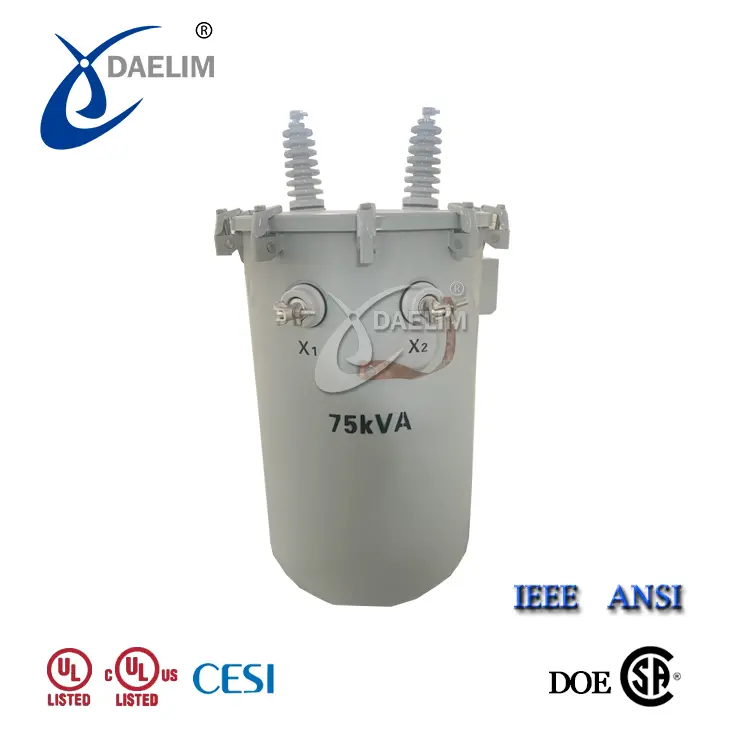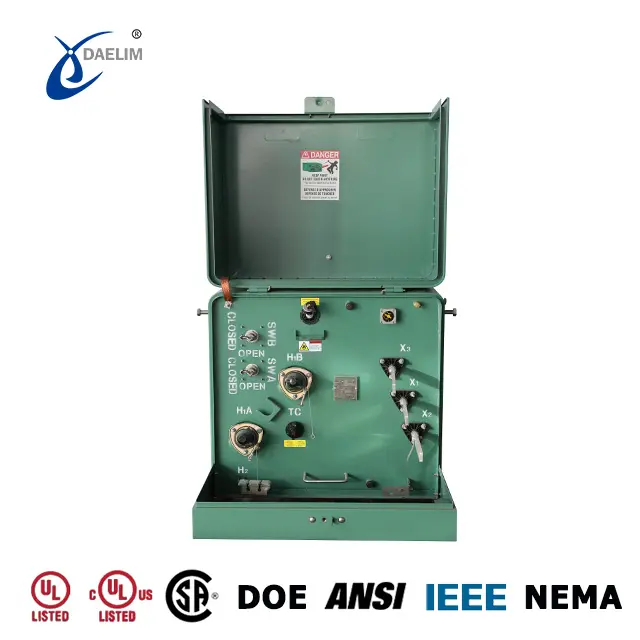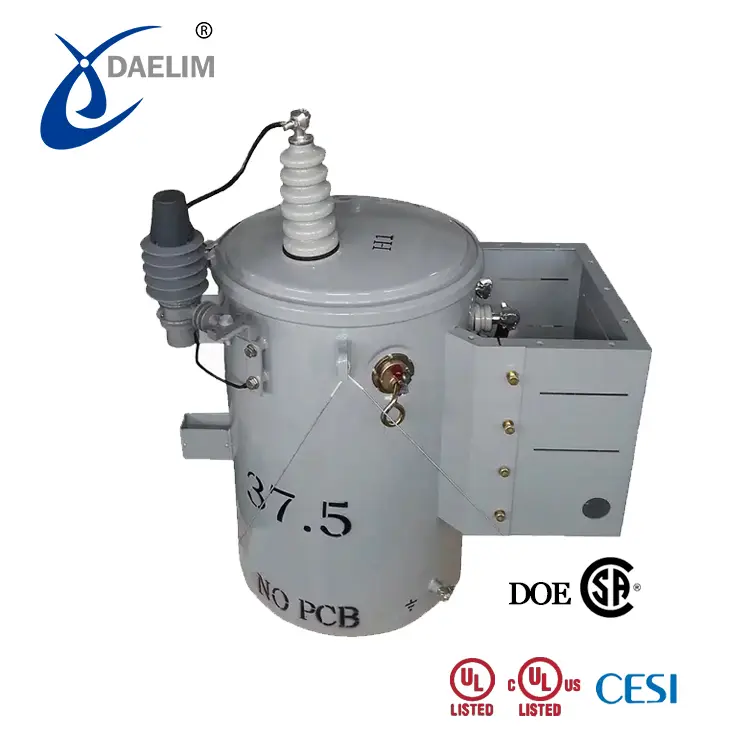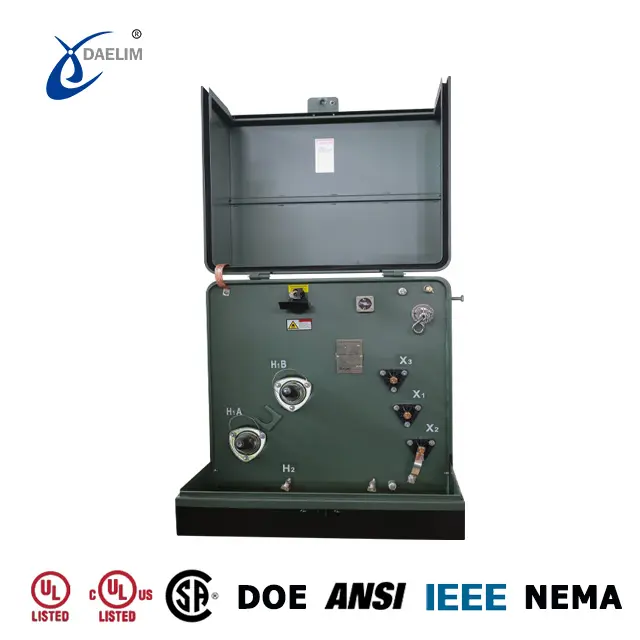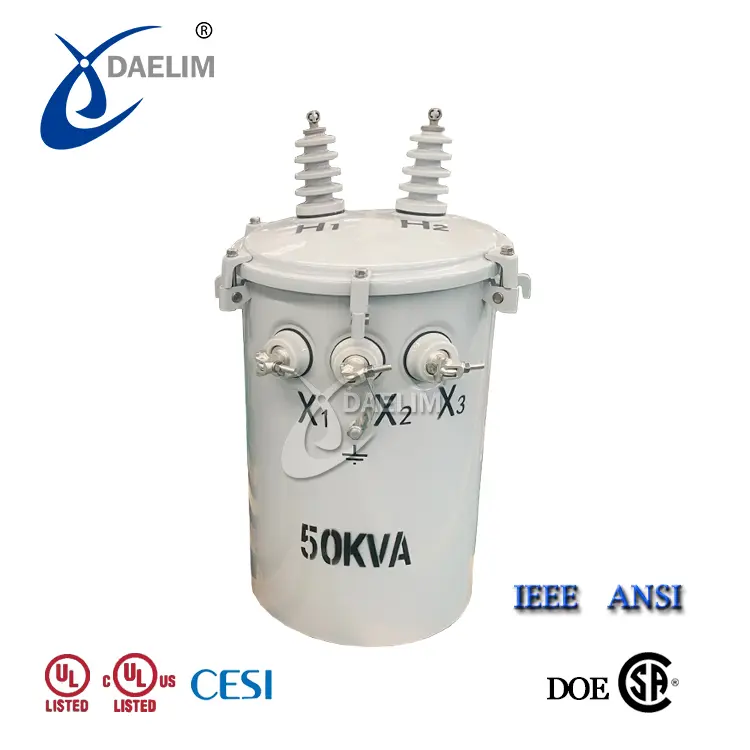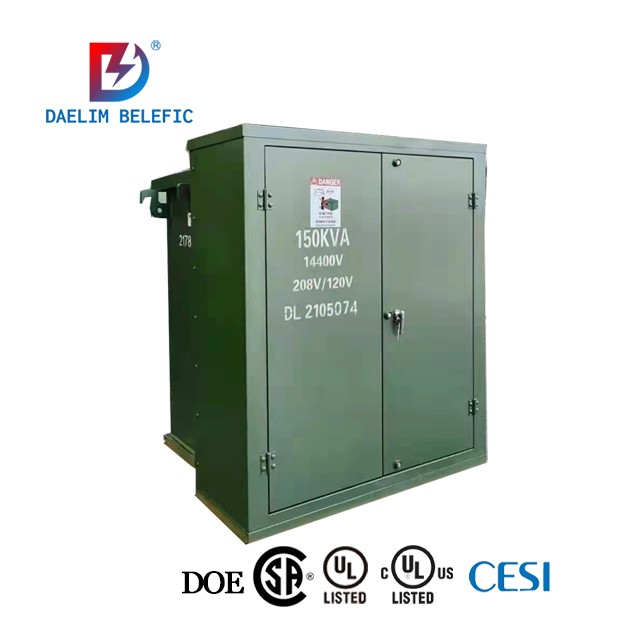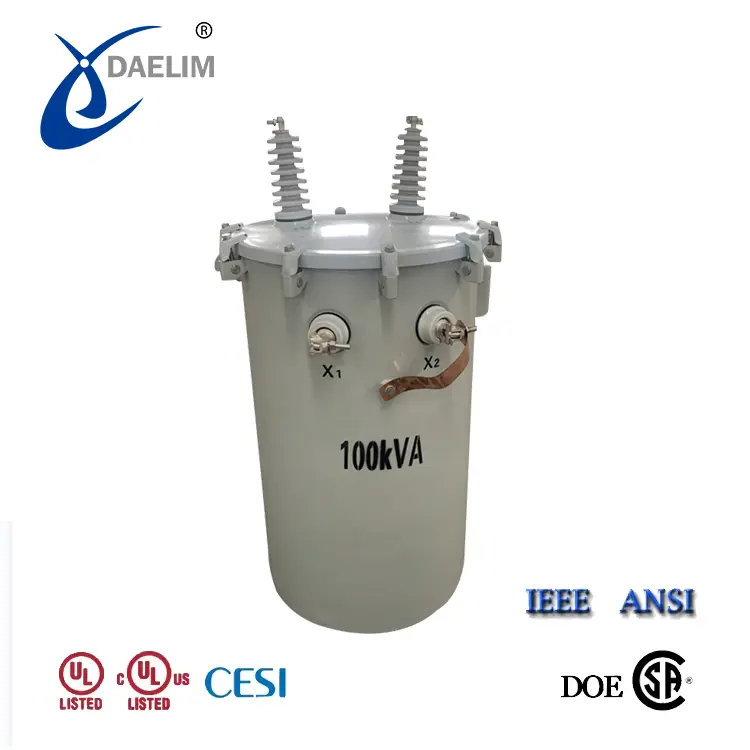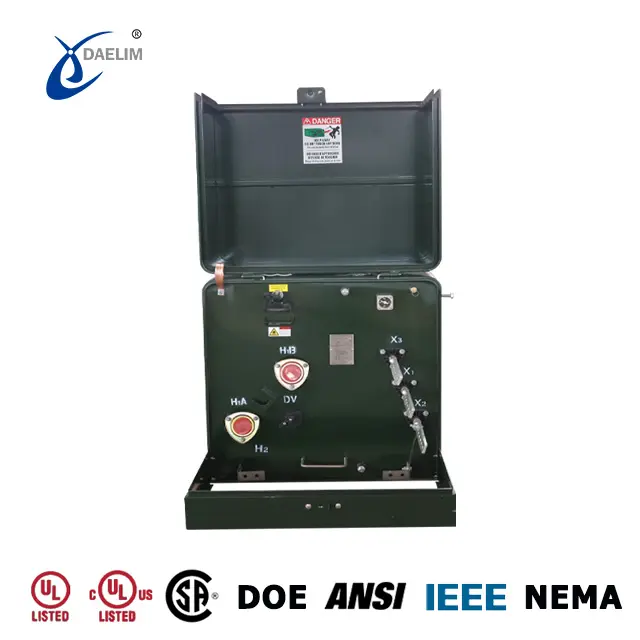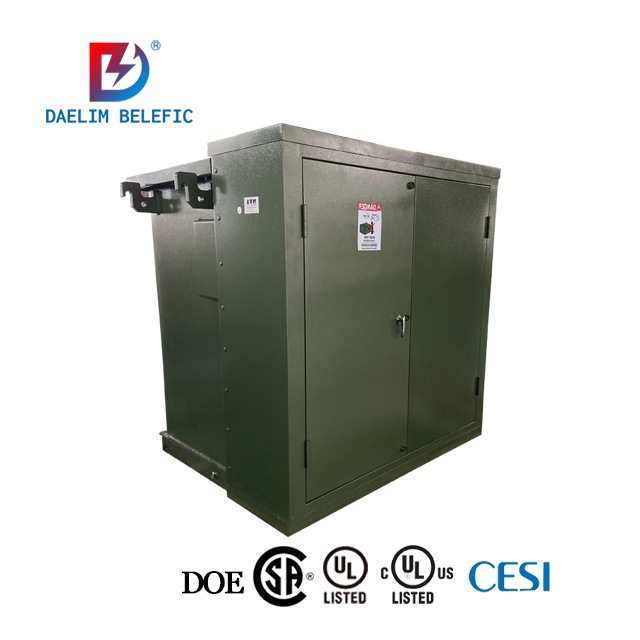Ultimate Guide to Utility Transformer
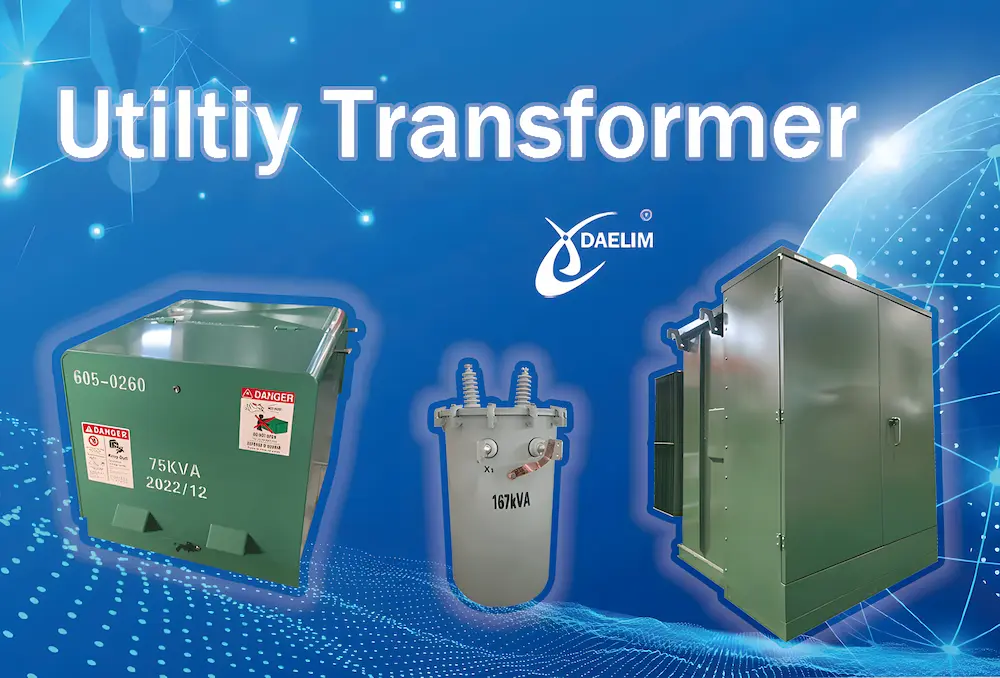
Utility transformers are indispensable components of electricity distribution and transmission lines. Daelim Transformer provides utility transformers globally. We offer commercial power transformers and function as a manufacturer of power company transformers. As you can see, Daelim has been very active in the utility transformers market since the beginning of the decade. Follow in Daelim transformer's footsteps to fully understand utility transformers.
Contact Daelim TransformerWhat Exactly Is A Utility Transformer?
Utility transformers are an essential part of the electrical grid since their role is to ensure that there is a steady flow of electricity.
In addition, utility transformers are classic electrical equipment based on physics principles and materials created decades ago.
However as years pass by, it has evolved to innovative designs, materials, and interactive technologies to increase its efficiency and prolonged life of this kind of transmission and distribution (T&D) asset.
To assure that each customer receives the proper quantity of electricity, utility transformers are technically positioned at electrical networks.
This enables the endpoint to function as the network's terminal point.
What Is Another Name For A Utility Transformer?

Utility transformers are commonly referred to as distribution transformers or service transformers.
Meanwhile, the following uses can be usually accommodated by transformers in the context of utility systems:
- Single-phase
- Three-phase
The underground line system typically employs a pad-mounted distribution transformer. This type of transformer finds its common application in residential and commercial areas, being situated on cement or stone pads. The power ratings for three-phase pad-mounted distribution transformers range from 150 kVA up to 1500 kVA for utility purposes. Single-phase pad-mounted distribution transformers, on the other hand, have power ratings ranging from 15 kVA up to 250 kVA for utility use.
Learn more about Pad Mounted Transformer
Conversely, in above-ground distribution line systems, utility pole transformer come into play. These transformers operate at voltage levels spanning from 2.4 kV to 34.5 kV, and their power ratings extend up to 333 kVA.
In addition, they are available in a wide range of dimensions, operational efficiencies, and insulating oils.
Try for free: What do you need to know about power pole transformer?
What Is The Construction Of A Utility Transformer?
In a utility transformer, the primary and secondary windings of wire are generally coiled around a magnetic core.
These cores are primarily made from laminated sheets of silicon steel that layers and hold the resin together.
Cores
In utility transformers, the elimination of currents in the core, which would ordinarily cause power dissipation and contribute to the loss, is usually made possible by the use of a laminate silicon steel framework.
A coiled C-shaped core in several utility transformers is a cost-effective solution when mass manufacturing.
Utility transformers' primary coils are consists of enamel-coated copper or aluminum wire.
Because secondary coils carry a large electric flow but a low voltage, they require a copper made of aluminum.
Windings
The windings inside utility transformers never become overheated because oil is constantly pumped into the device.
The majority of tanks have gaskets on the top that are waterproof.
And during the manufacturing process, any moisture that may potentially cause an electrical discharge is usually drained.
Tap Changer
Utility transformers may have an off-load tap changer that allows for fine changes to the ratio of primary to secondary voltage.
That is to maintain the proper range of voltage at the customer's end on long or heavily loaded lines.
Overall, the efficiency of most utility transformers is between 98% and 99.2%.
Learn more about Transformer Construction
What Are The Usages Of Transformers Utility?
Powering structures like residences, farms, and pumping stations requires the usage of utility transformers. 
In addition, utility transformers need a supplementary power source to run the overhead wire on an alternating current electrified railroad.
Utility transformers are responsible for decreasing transmission connectors' high voltage.
After it has fallen to an acceptable level, power will be readily made available to business and residential buildings.
You may change 12kV, into either 230V single phase or 415V three phases.
Transformer utility systems can also be highly used to provide impedance matching.
Above all, a commercial power transformer can provide us with the necessary power anytime it's required.
Get it now: How to buy an electric pole transformer?
What Kind Of Industries Use A Commercial Power Transformer?
Today, there is a wide variety of electrical devices, each of which has its specific voltage requirements.
The capacity of a commercial power transformer must be first evaluated to produce an acceptable voltage based on the loads or machines utilized in a certain industry.
Learning Institutions
Specialized hardware and software, as well as lab and classroom equipment, are mainly needed at educational institutions.
Powering all of these electronic devices requires a commercial power transformer.
It is of utmost importance that the students and buildings inside these establishments be always secure.
Nuclear Power Plants
The oil and gas industry, power plants, and mechanical drive systems in manufacturing all make use of commercial power transformer.
Thanks to the accessibility of high-efficiency, purpose-built utility transformers.
You may enjoy: Basic Guide To High Voltage Power Transformers
Substations
Substations are often the locations where commercial power transformers are mainly kept.
This is to ensure the secure transportation of ever-increasing amounts of electrical current.
Solar and Wind Energy Resources
To distribute energy by solar and wind-generating sources, substantial equipment is generally required to reduce the voltage.
As solar and wind power become more widely available, commercial power transformers will need to be highly upgraded to accommodate them.
Utility transformers may be small and easy to install, allowing solar energy to power appliances like dryers, thermostats, lights, and air conditioners.
Commercial Structures
Commercial buildings including malls, movie theaters, organizations, restaurants, and hotels, rely on commercial power transformer to provide the necessary electrical voltages
Residential Houses and Single House
The flow of electricity to residential areas is highly maintained by utility transformers, which enables electrical devices to continue functioning normally.
Apartment buildings, single houses, and other residential areas all require utility transformers.
Transformer utility systems are on an individualized basis so that they can fulfill the power demands of each specific device that they supply.
Keep reading: Residential Transformer: The Small Green Box in the Neighborhood
How Many Voltages Are There In A Utility Transformer?

The transformer voltage of distribution for residential or small commercial customers, and utilities is usually below 35kv.
A consumer can utilize this electricity without risk when the voltage is primarily lowered by utility transformers.
A standard residential service uses both 120 and 240 volts. Multiple houses can be often supplied by single utility transformers.
As you can see, commercial power transformer are generally built to accommodate the total power consumption of everyone on the network.
Massive industrial firms and other power consumers with massive motors will sometimes employ service voltages greater than 240 volts.
That is to cut costs and make better use of available space.
In most cases, the standard voltage for principal lines in factories is 480 volts.
However, higher voltages may be necessary for machines with bigger motors or to meet higher energy processing demands.
Read my article on CSA C227.3 For Single Phase Pad Mounted Distribution Transformer
Does A Bigger Utility Transformer Necessarily Imply More Power?
Yes, you may use dimensional analysis to prove that power handling is proportional to dimensions.
Simply put, the winding area indicates the current capacity, whereas the core area reflects the voltage capacity.
To withstand greater voltages without increasing the number of turns, a larger core area is necessary.
A greater utility transformers winding area allows for larger wire, which increases current. In other words, more power means a higher voltage and current.
Extra insulation and clearances may increase the size of utility transformers if one side operates at a very high voltage, but this will have minimal impact on the transformer's overall mass.
In addition, the amount of iron and copper generally used in a transformers utility system is directly proportional to its power output.
Hence its weight is a more reliable indicator of its effectiveness than its dimensions. There is no intentional overuse of iron and copper.
How Are Commercial Power Transformer Connected To The Grid Lines?
Commercial power transformer lowers the power line voltage so they may be safely used within establishments.
Oftentimes, utility transformers are generally connected to the service line by a low-voltage cable. Then while the power lines are also supplied by a high-voltage wire.
Before the electricity is largely transferred to the grid, the voltage is normally boosted by means of utility transformers while it is highly transmitted through a power plant.
Substations take in energy from high transmission grids and turn it into a form that can be generally utilized by the general public through the use of a commercial power transformer.
This is mainly performed in power distribution centers. Substation breakers are mainly used to separate power flows for diverse uses.
Using circuit breakers, switches, and power grid operators may regulate the flow of energy from the transmission lines to the distribution lines.
As a result, transmission lines transmit electricity from a substation to consumers.
Keep reading: CSP VS Conventional Transformer: Which Is Better?
How Does Power Company Transformer Use Utility Transformers?
Power company transformer uses utility transformers to increase the voltage of the energy to hundreds of kilovolts before sending it down a power line.
This reduces the current and helps keep transmission losses to a minimum.
Step-down transformers, on the other hand, bring the voltage down to the 120 V that is common in most homes.
The transmission voltage at substations is highly lowered while the current flowing to consumers is generally increased.
Advantages
- Transmission costs are highly reduced
- Less power is generally consumed
- Success rates above 99.9%
- Compatible with a wide variety of voltage specifications.
- Worth the cost
- Highly Reliable
- Extremely durable
Disadvantages
- Inadequate upkeep might lead to a blown transformer
- Variations in commodity costs
- Rectification takes more time to resolve
What Are The Differences Between Utility Transformers From Power Transformers?

While power transformers are generally built for transmission, utility transformers are purely built to supply users with lower voltages.
Utility transformers are not technically designed for a generation but rather for distribution.
This method is mainly used to reduce the voltage and noise of an electrical transmission line to acceptable levels.
This standard, which can mainly be highly referred to as the end-user safety level, is useful for both consumers and businesses.
Wires may be then buried rather than strung overhead if there isn't enough space.
When shifting energy from one circuit to another, power transformers are typically used because they enable the electricity's original frequency to be highly preserved while it is being transferred.
On the other hand, when moving power from one circuit to another, power transformers are generally employed so that the frequency of the transferred energy is highly preserved.
They are responsible for delivering power from the source to the earliest sites of distribution.
Transformer Isolation and Dimensions
In a short circuit, power transformers may generate currents in the hundreds of amperes.
In addition, their working voltages can go well above thousand volts.
Utility transformers, on the other hand, have ratings of less than 1 kilovolt and may safely handle short circuit currents in the tens of amperes.
Losses of Copper and Iron
Due to hysteresis losses in the core material in the steel laminations, power transformers lose heat energy.
Since there is no iron in a utility transformer, the device experiences far reduced iron losses.
Losses due to hysteresis contribute further to their overall energy loss.
While power transformers continue to release significant amounts of heat, utility transformers, due to their reduced size, produce far less heat while passing through high currents.
Exceptional Productivity
The efficiency of utility transformers is significantly higher than that of power transformers.
The ratio of generated power to input power was mainly used to determine the most efficient configuration for the power grid.
According to All Day Efficiency's projections, the degree of efficiency achieved by utility transformers will fall between 50% and 70%.
However, power transformers' efficiency is often between 97% and 99%.
Learn more: What You Need To Know About Overhead Transformers?
Utility Transformer Manufactures
Daelim Transformers stands as an exceptional entity among the multitude of utility transformer manufacturers. The quality, safety, and long-term dependability of our transformers is consistently upheld through rigorous testing and analysis.
Daelim Transformer is a power company transformer that manufactures 2.4kV,7.2kV, 7.6kV,13.2kV, 13.8kV, 14.4kV,24.94kV, and 34.5kV utility transformers, power rating from 15 kVA up to 1500 kVA.
Daelim Transformer also has transmission transformers like 46kV,69kV, 115kV, 138kV, 161kV, and 230kV.
It is safe, sturdy, and resistant to mechanical stress, heat, and moisture, making it a trustworthy and secure investment.
The great quality of its structure and materials ensures that it will survive for a very long period.
Daelim's utility transformers are adaptable for usage in a variety of different environments, including traditional power networks, renewable energy installations, and industrial environments.

